Introduction
Auto repair loans are the go-to search when a repair bill hits and there’s no cash to cover it. Engine trouble. Brake failure. Transmission replacement. These aren’t optional fixes, they’re urgent, expensive, and usually impossible to delay.
When savings fall short, financing becomes the next move. That might mean a personal loan from an online lender, emergency funds through a lending platform, or even point-of-sale financing directly from your mechanic. The catch? Not all options are created equal.
Some get you back on the road without destroying your budget. Others bury you in high interest, hidden fees, or repayment terms designed to break you.
This guide strips it all down. You’ll learn how repair financing actually works, what to watch out for, and which lenders are built to help not trap you when your car needs fixing fast.
Key Takeaways
What You’ll Learn About Auto Repair Loans
- Not all repair loans are the same. Some fix your car; others quietly wreck your budget with fees and inflated interest.
- Bad credit isn’t a dead end. You still have options — but choosing the wrong lender can make things worse.
- Speed doesn’t always mean risk. The fastest funding options aren’t automatically the most dangerous — and the “safe” ones can hide surprises.
- You may not need a loan at all. Many drivers overlook payment plans, credit union programs, or assistance options that solve the problem without new debt.
- Lenders look beyond your credit score. Income, debt ratios, and vehicle type matter more than most borrowers realize.
Disclaimer: This site contains affiliate links. If you make a purchase, we may earn a commission at no extra cost to you.
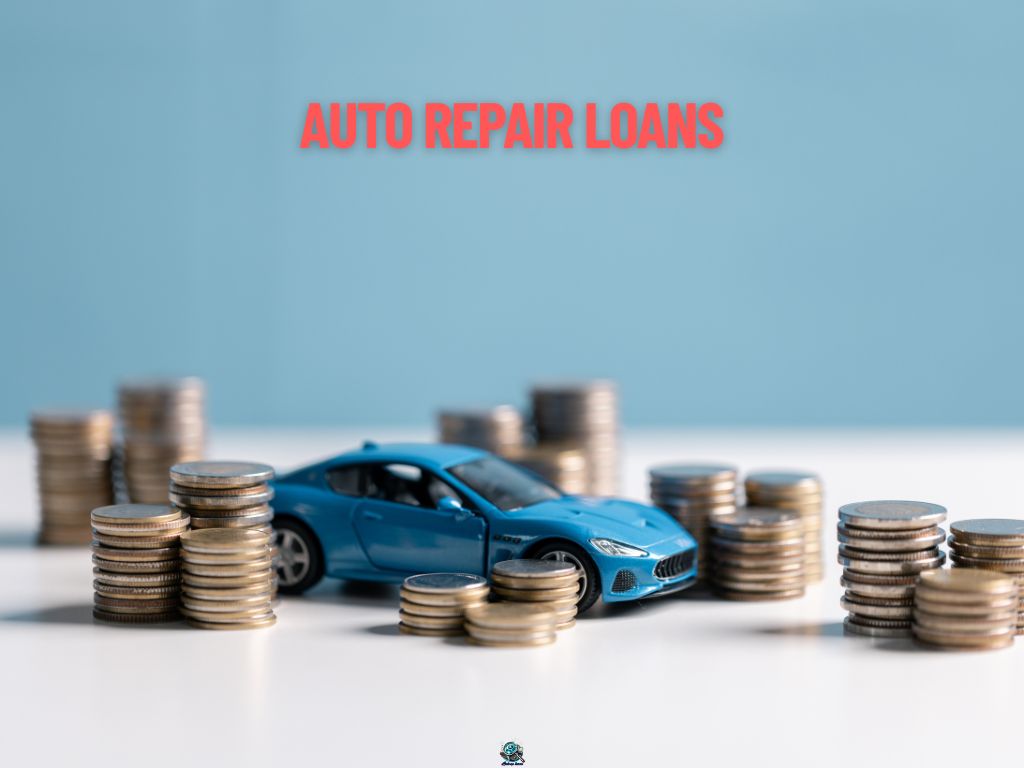
How Can You Pay for Repairs When Cash Is Tight?
Car repairs don’t wait for your next paycheck. When your transmission fails or your brakes give out, waiting isn’t an option and neither is walking away from the bill.
If you don’t have the savings to cover it upfront, financing can keep you moving. Depending on your credit score, income, and how quickly you need the money, there are several ways to cover repair costs without digging a deeper financial hole.
Here’s how to think about it:
- If you need speed: Look into online personal loans, emergency loans, or point-of-sale financing through your mechanic. These can fund in hours or days.
- If you need flexibility: Credit cards and “buy now, pay later” plans let you pay over time, often interest-free if repaid quickly.
- If you want structure and predictability: Traditional personal loans or credit union products offer fixed rates, set monthly payments, and a clear end date.
Each path has trade-offs. The fastest options can be the most expensive, and the cheapest ones may take more time or paperwork.
The key is to match the loan to your situation, not your stress level. When done right, financing helps you fix your car, protect your credit, and stay on the road without wrecking your wallet.

Loan Options for Car Repairs (Compared by Speed, Cost & Flexibility)
Not all financing is created equal. Some loans deliver cash the same day but come with sky-high interest rates, while others offer fairer terms but require stronger credit or more paperwork.
Here’s a breakdown of the most common ways to cover repair costs when money’s tight and how to tell which fits your situation best.
1. Personal Loans
What they are: Fixed-term, unsecured loans from banks, credit unions, or online lenders.
Best for: Larger or planned repairs where you want predictable monthly payments.
Why it works: Stable rates and set payoff schedules help you budget clearly.
Watch for: Origination fees or prepayment penalties—compare the total cost, not just the rate.
Funding speed: 1–3 business days (sometimes same-day online).
2. Emergency Loans
What they are: Fast-approval loans designed for urgent expenses. Usually based more on income than credit.
Best for: Unexpected breakdowns when time matters more than rate.
Why it works: Quick online applications and minimal documentation.
Watch for: APRs that can exceed 50% if you have poor credit borrow only what you can repay quickly.
Funding speed: Often same day or next day.
3. Credit Cards
What they are: Revolving credit lines you can use immediately.
Best for: Small to mid-sized repairs that you can pay off within a month or two.
Why it works: Fast, convenient, and can offer 0% intro APR if you have good credit.
Watch for: High ongoing interest if you carry a balance; only use if repayment is near-term.
4. Mechanic Financing
What it is: Financing arranged directly through your repair shop either in-house or via a partner lender like EasyPay or Synchrony.
Best for: Mid-sized repairs when you don’t want to apply elsewhere.
Why it works: One-stop setup and quick approval.
Watch for: Limited terms or hidden shop fees. Ask for the full APR and payoff timeline before signing.
5. Buy Now, Pay Later (BNPL)
What it is: Short-term installment plans from services like Affirm, Klarna, or Sunbit, often available at auto shops.
Best for: Moderate repair bills (under $1,500) and soft-credit-check approval.
Why it works: Split costs into predictable, interest-free payments when paid on time.
Watch for: Late fees or short payoff windows that can add up if missed.
💡 Example: A $1,000 brake repair financed at 25% APR over 6 months would cost around $110 per month and about $75 in total interest. By comparison, a 0% BNPL plan repaid on time would cost only the principal.
According to the Federal Reserve’s 2025 Consumer Credit Report, average personal loan APRs range from about 10%–15% for borrowers with 660+ credit, and 30%–35.99% for subprime borrowers. These averages align with current national consumer lending caps.

How to Qualify for an Auto Repair Loan (Even With Bad Credit)
Approval for an auto repair loan depends on five key factors but here’s the good news: you don’t need perfect credit to get approved. What matters more is showing that you can repay on time and that your finances are stable.
Lenders look at a combination of credit, income, debt load, and consistency.
Here’s what they actually care about and how you can strengthen your application fast.
1. Credit Score (Shows Your Past)
Your credit score gives lenders a quick snapshot of how you’ve handled debt before.
- Strong credit (660+): Lower rates, longer repayment terms, higher approval odds.
- Fair credit (580–659): Moderate rates, smaller loan amounts, may need proof of income.
- Poor credit (<580): Higher APRs, shorter terms but still possible with the right lender.
Pro Tip: If your score is low, apply through lenders that prequalify with a soft credit check, this lets you compare offers without lowering your score.
2. Income Verification (Shows Your Stability)
Lenders want proof that you can handle repayment comfortably. You can verify income through:
- Recent pay stubs or W-2s
- Bank statements
- Tax returns (if self-employed)
Some emergency or fintech lenders use cash-flow underwriting, which looks at your banking history instead of credit.
3. Debt-to-Income Ratio (Shows Your Capacity)
Your DTI ratio compares your total monthly debt to your income.
- Most lenders prefer a DTI under 40%–45%.
- Higher ratios suggest you’re stretched too thin.
If your DTI is high, consider paying down a small balance or consolidating before applying even a minor improvement can bump you into approval range.
4. Employment History (Shows Your Consistency)
Stable employment (6+ months at your current job) reassures lenders that your income is steady.
If you’ve recently switched jobs, have proof of continued earnings like offer letters or direct deposits.
5. Documentation (Speeds Up Funding)
Having everything ready can shave days off approval time.
Keep these documents handy:
- Driver’s license or ID
- Proof of income
- Bank account for deposit
- Repair estimate or invoice from your mechanic
🧭 Approval Readiness Checklist
Before applying, make sure you can answer “yes” to these:
- My income covers my basic expenses + loan payment.
- I’ve compared at least two lenders or prequalified offers.
- I know the total cost of the loan (APR + fees).
- I have documents ready to upload.
According to Experian’s 2025 Auto Financing Study, borrowers with fair credit (580–669) who provided verified income were 38% more likely to get approved for small personal loans than those who didn’t submit full documentation.

What If You Have Bad Credit? (You Still Have Options)
Having bad credit doesn’t automatically shut the door on auto repair financing; it just changes how you need to approach the process.
You might not get the lowest interest rate or longest term, but you can find fair options if you know where to look and what red flags to avoid.
Here’s how to navigate the process strategically, even with a low score.
1. Focus on Lenders That Specialize in Second-Chance Borrowers
Some online lenders and fintech platforms are built specifically for people with limited or damaged credit.
They often base approvals on income, banking history, or employment stability instead of just a credit score.
Look for phrases like:
- “credit-flexible personal loans”
- “cash flow underwriting”
- “no minimum credit score required”
Pro Tip: Check whether the lender reports payments to credit bureaus that’s how you rebuild credit over time.
2. Use Prequalification Tools Before Applying
Many legitimate lenders allow you to see estimated rates and terms with only a soft credit check.
This step doesn’t hurt your credit score and helps you compare offers side by side before committing.
Once you find a match, you can proceed with a full application (which includes a hard credit pull).
3. Avoid the “Too Easy” Offers
If a lender advertises “no credit check, guaranteed approval,” stop and read the fine print.
Those are usually high-risk or predatory loans with triple-digit APRs, hidden rollover fees, and zero reporting to credit bureaus.
A good rule of thumb: If it sounds too easy, it’s probably too expensive.
4. Credit Unions and Community Lenders Are Your Secret Weapon
Local credit unions often offer small-dollar personal loans or “Payday Alternative Loans (PALs)” with capped interest rates (usually under 28%).
They’re far safer than payday or title loans and come with flexible repayment terms.
Even if you have poor credit, your relationship with the credit union like direct deposits or consistent account history can strengthen your approval odds.
5. Understand What “Bad Credit” Really Costs
Let’s make it tangible. A borrower with a 720 credit score might get a 10% APR on a $2,000 repair loan.
A borrower with a 580 score could face 26%–36% APR.
That’s the trade-off but with the right lender, it’s still manageable and far safer than payday or title loan rates (which often exceed 200%).
6. Protect Yourself From Long-Term Damage
If you’re applying with bad credit, your goal isn’t just approval, it’s avoiding loans that trap you.
Before signing, always confirm:
- The total repayment amount (not just the monthly payment)
- The full APR, including fees
- Whether late fees or prepayment penalties apply
- If payments are reported to credit bureaus
When in doubt, choose the offer with transparency and flexibility over the one promising instant cash.

According to a 2025 TransUnion Lending Trends Report, borrowers with credit scores under 600 who used prequalified personal loans paid 37% lower average APRs than those who accepted the first loan offer they received.
💬 Bottom Line: Bad credit doesn’t mean no options, it means smarter ones. If you take a few minutes to compare, prequalify, and verify, you’ll find a lender who helps you fix your car without wrecking your finances.
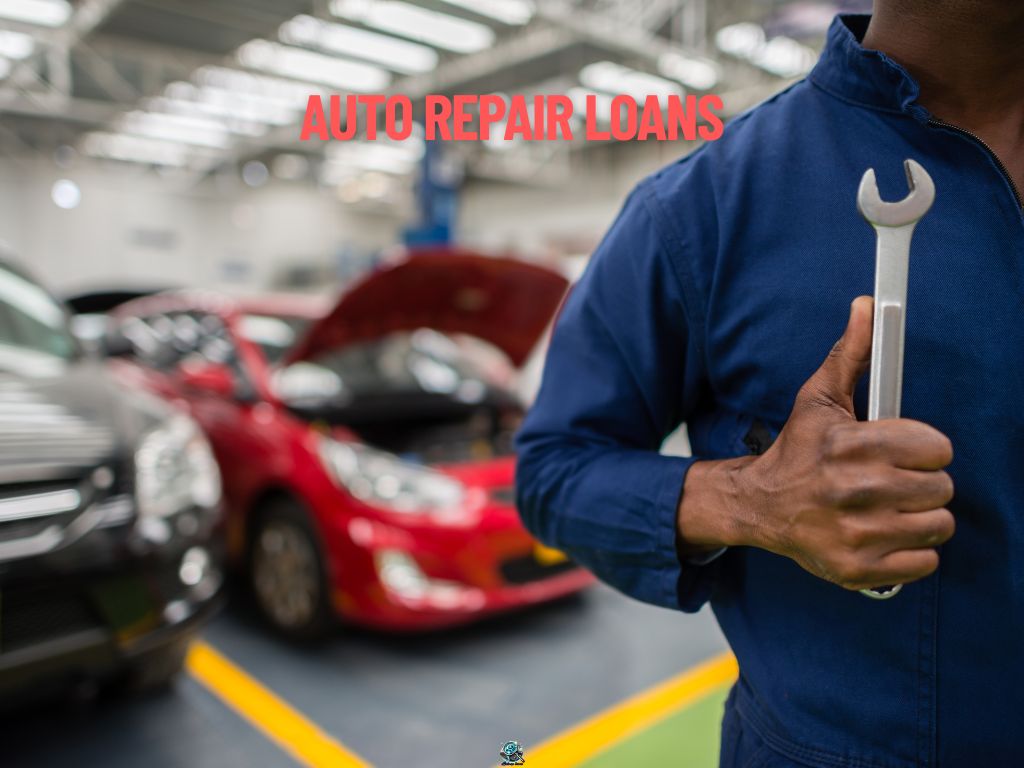
Emergency Loan Options for Car Repairs (When You Need Cash Fast Safely)
When your car breaks down and waiting isn’t an option, you need money fast but you also need to protect yourself from the kind of “instant approval” traps that can turn one bad day into months of debt.
Here’s how to get emergency repair funding quickly without overpaying or risking your finances.
1. Online Personal Loans (Fastest Funding for Most Borrowers)
Modern online lenders like Upgrade, LendingClub, or Avant offer same-day or next-day deposits, depending on your bank.
- Funding Speed: 24 hours (some same-day).
- Typical APR: 10%–36%.
- Best for: Urgent repairs over $500 when you can verify income.
Pro Tip: Prequalify with multiple lenders before applying, you can check real rates with no credit impact.
2. Credit Union Emergency Loans (Lower Rates, Member-Friendly Terms)
If you’re part of a credit union, ask about small-dollar emergency loans or Payday Alternative Loans (PALs).
- Funding Speed: 1–2 business days.
- Typical APR: Capped at 28% (by federal law).
- Best for: Members with fair or poor credit who need safe, predictable repayment.
These loans are designed to help, not trap many credit unions even allow skip-a-payment options in emergencies.
3. Mechanic Financing (Fastest Approval at the Shop)
Some auto repair shops partner with lenders like Synchrony Car Care, Snap Finance, or EasyPay to offer financing directly on-site.
- Funding Speed: Instant approval (decision within minutes).
- Typical APR: 0% promotional or 20%–35% standard.
- Best for: Immediate repairs you can’t delay (brakes, alternator, etc.).
Always ask if there’s a promotional interest-free period some offer 90 days same-as-cash if paid off early.
4. Paycheck Advance Apps (For Partial Repair Costs)
Apps such as Earnin, Dave, Brigit, and Albert let you borrow small amounts ($100–$500) from your next paycheck.
- Funding Speed: Same day (depending on your bank).
- Cost: Typically $0–$10 in tips or fees.
- Best for: Covering down payments, diagnostic fees, or partial repairs.
These aren’t full loans, but they’re a smart, short-term fix if you’re waiting for a paycheck and need to get your car out of the shop.
5. Employer-Based Assistance or Advances
Some employers offer paycheck advance programs or financial wellness benefits through providers like PayActiv or DailyPay.
- Funding Speed: Within hours to 1 day.
- Cost: Often free or under $5 per advance.
- Best for: Employees needing quick access without borrowing from external lenders.
Ask HR discreetly you’d be surprised how many companies now offer this quietly.

🚨 Caution Before You Click “Apply”
When time’s short, high-interest lenders count on panic clicks.
Before you accept an offer, confirm three things:
1️⃣ The total repayment amount (not just the monthly rate)
2️⃣ The APR, including any origination or service fees
3️⃣ The funding timeline if they can’t confirm it in writing, skip it
Even emergency funding should be clear, capped, and transparent.
According to a 2025 report by the Federal Reserve, online personal loan approvals for emergency expenses jumped 41% year-over-year, with most same-day funds going to borrowers under 650 credit scores proving fair options do exist, even for urgent needs.
💬 Bottom Line: You can get back on the road fast without wrecking your finances in the process.
Start by comparing fast-funding options side by side, verify the true APR, and aim for repayment within 30–90 days if possible.
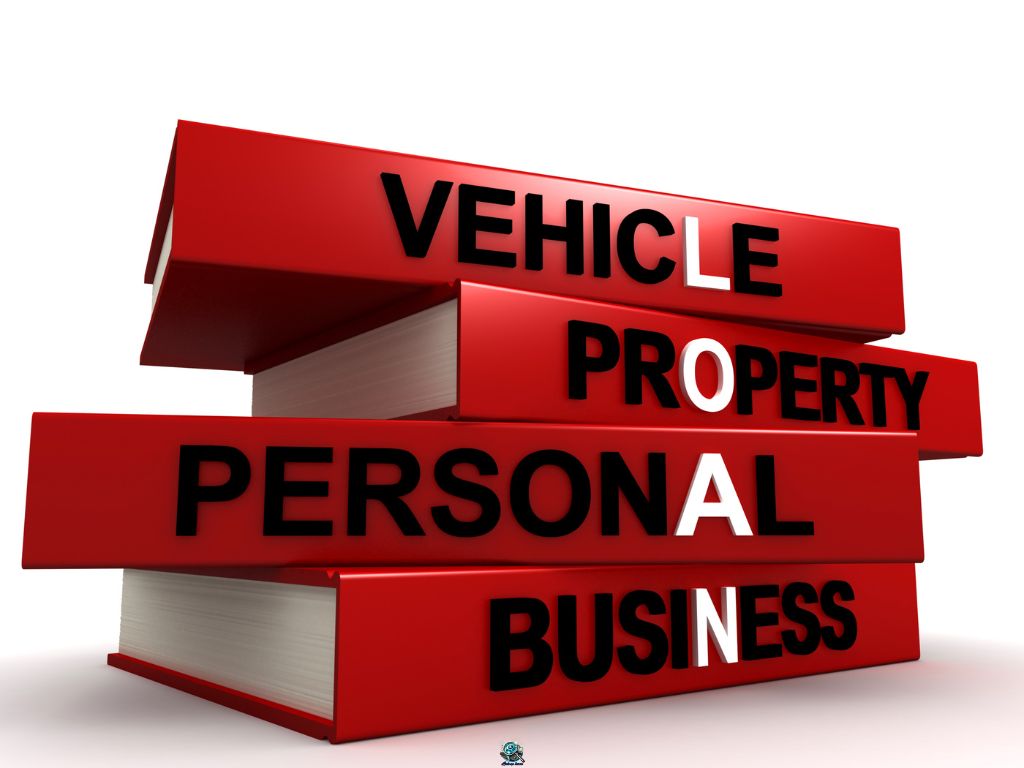
Smarter Alternatives to Auto Repair Loans (That Don’t Add More Debt)
Sometimes the best way to handle a car repair bill isn’t to borrow more, it’s to rethink how you pay.
If your goal is to get your car fixed without sinking deeper into debt, there are several paths that can work, even if you’re short on cash today.
Here’s how to stay mobile, solvent, and in control.
1. Repair Shop Payment Plans (Ask Before You Assume)
Many mechanics and repair chains from Pep Boys to Firestone and local garages offer in-house or third-party payment programs.
These allow you to split your bill into smaller payments over time, sometimes interest-free if paid within 90 days.
- Pros: No credit check (in many cases), instant approval, keeps your car moving.
- Watch for: Late fees after promo periods or minimum spend requirements.
Pro Tip: Always ask. Many shops don’t advertise their financing but have partnerships ready to go when you ask at the counter.
2. Credit Union Hardship or Small-Dollar Loans
If you’re already a credit union member, you might qualify for a Payday Alternative Loan (PAL) or hardship loan designed to help members cover essential expenses like car repairs or rent.
- Loan amounts: $200 – $2,000
- APR cap: 28% (by law)
- Terms: Up to 12 months, often with payment flexibility
Credit unions often prioritize members over credit scores, and some allow deferred payments if your situation changes.
Why it helps: Credit unions are community-based, not profit-maximized. They’re one of the few places where you can still explain your situation and be heard.
3. Employer-Based Assistance or Paycheck Advance
Many companies now partner with platforms like PayActiv, DailyPay, or Even to let employees access part of their paycheck early.
- Funding Speed: Same day
- Typical Cost: $0–$5 per transaction
- Best for: Covering partial repair costs (like a $300 brake job or inspection fee)
If your workplace doesn’t have this, ask HR discreetly, some employers even have emergency hardship funds for essential expenses like transportation.
4. Borrowing from Friends or Family (Done Right)
It’s awkward, yes, but sometimes it’s the fastest and least costly option.
The key is to make it clear and structured so it doesn’t become personal friction.
Write down:
- Loan amount
- Repayment timeline
- Agreed communication (e.g., updates every payday)
Pro Tip: Treat it like a professional loan. It protects both sides and your relationship.
5. Use Emergency Savings (This Is Exactly What It’s For)
If you’ve built an emergency fund, this is one of the best moments to use it.
Repairs that keep your car running aren’t luxuries; they’re lifelines to work, family, and stability.
Yes, it might feel uncomfortable to dip into your savings but paying interest on a loan you didn’t need will feel worse later.
6. Community & Assistance Programs
Local nonprofits, churches, and government programs often have transportation assistance funds or emergency grants.
Many cover partial repair costs or offer vouchers for essential maintenance.
Call 211 (the United Way help line) or check your city’s human services department for auto repair or hardship programs.
In 2025, dozens of local programs from ModestNeeds.org to Catholic Charities covered up to $500 in car repairs for working parents and essential workers.
Bottom Line: You don’t have to take out another loan to get your car fixed. If you pause long enough to explore these alternatives, you might save hundreds in fees, avoid high-interest debt, and still get your car and your life back on track.
A 2025 NerdWallet survey found that 41% of Americans who faced a surprise $1,000 car repair paid for it without borrowing by combining payment plans, paycheck advances, and community resources proof that slowing down for one day can save you months of debt.
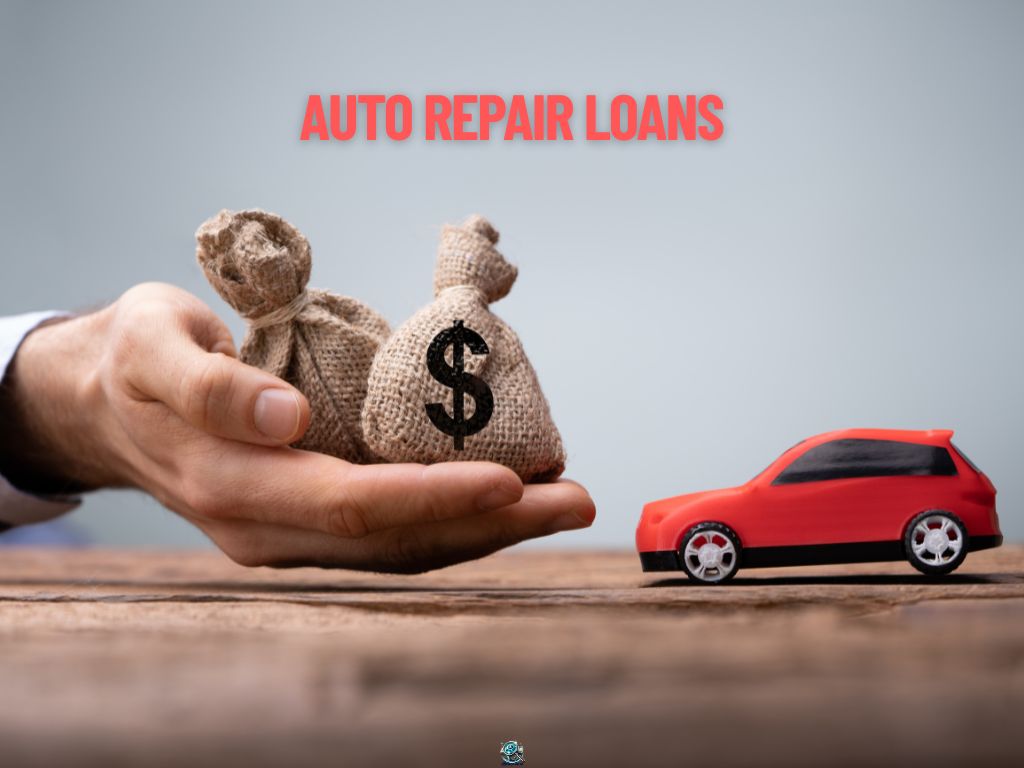
Conclusion: Repair Your Car Without Breaking Your Finances
Car trouble can derail your plans in minutes but it doesn’t have to wreck your finances. The best move isn’t always the fastest one; it’s the one that keeps you in control.
Auto repair loans, mechanic financing, and credit union programs all serve a purpose when used wisely. Whether you’re dealing with an urgent fix or planning preventive maintenance, the key is matching the loan to your situation, your credit, your budget, and how quickly you can repay.
If you can, use savings first. If you can’t, compare offers carefully. Prequalify with multiple lenders, check the total repayment cost, and avoid any lender that hides the full APR or pushes urgency.
A working car keeps life moving but financial stability keeps everything else steady.
Choose the option that helps you fix your car today without creating debt you’ll regret tomorrow.
Drive safe, borrow smart, and keep your wallet and your car running smoothly.
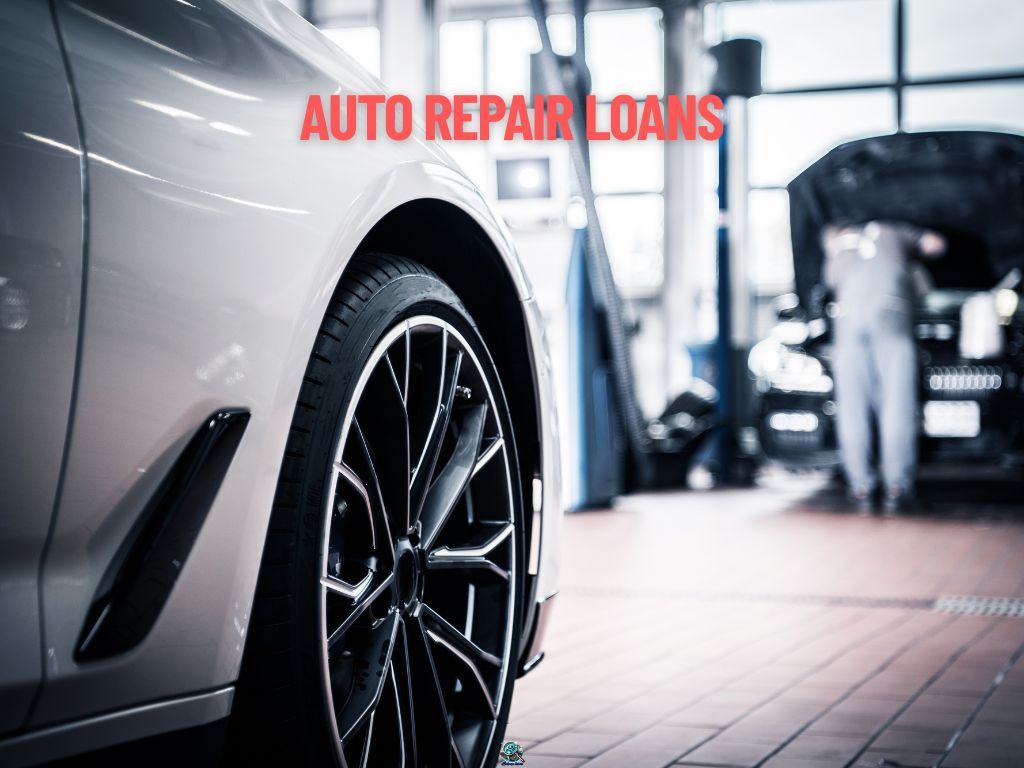
Frequently Asked Questions About Auto Repair Loans
1. How much can I borrow for car repairs?
Loan amounts usually range from $500 to $10,000, depending on your credit profile, income, and the lender. Most common repair bills, such as brake replacements or transmission fixes, cost between $1,000 and $2,500, which most lenders can easily cover.
2. Can I get approved if I have bad credit?
Yes. Many lenders accept borrowers with credit scores below 600, focusing more on income and repayment ability than credit history. However, you’ll likely face higher interest rates and shorter repayment terms, so comparing multiple offers is important.
3. Will applying for a repair loan hurt my credit?
No. Most lenders allow prequalification with a soft credit check, which doesn’t affect your credit score. A hard inquiry is only done once you officially apply and accept an offer, which may cause a small, temporary dip.
4. How fast can I get the money?
Funding times depend on the lender. Online lenders can often deposit funds within 24 hours, while credit unions or mechanic-backed financing may take one to two business days for approval and disbursement.
5. Do auto shops offer financing directly?
Yes. Many auto repair shops now offer third-party financing through partners like Synchrony, Snap Finance, or EasyPay. These programs allow you to repair your vehicle immediately and pay the cost off over time.
6. What’s the difference between a car repair loan and an auto loan?
A car repair loan helps pay for maintenance or repairs on a vehicle you already own. An auto loan is used to purchase a vehicle, with the car itself acting as collateral until the balance is paid off.
7. Can I use a credit card instead of a repair loan?
Yes. Credit cards work well for smaller or moderate repair costs, especially if you can pay off the balance quickly. If you carry the balance for several months, though, interest charges can make it more expensive than a personal loan.
8. Are there credit union options for car repairs?
Yes. Credit unions often provide Payday Alternative Loans (PALs) or small-dollar emergency loans with interest rates capped at 28% or less. These loans are designed to help members manage emergencies affordably and responsibly.
9. What’s the best option if I need the repair now but can’t afford it?
If time is critical, look for online personal loans with fast approval or mechanic financing at the point of service. Both offer quick access to funds. Afterward, consider refinancing into a lower-rate loan once the emergency has passed.
10. Should I use savings instead of borrowing?
If you have enough savings, yes. Using cash avoids interest, debt, and credit checks altogether. Auto repairs are one of the best reasons to dip into emergency savings since they directly affect your mobility and ability to work.
0 Comments